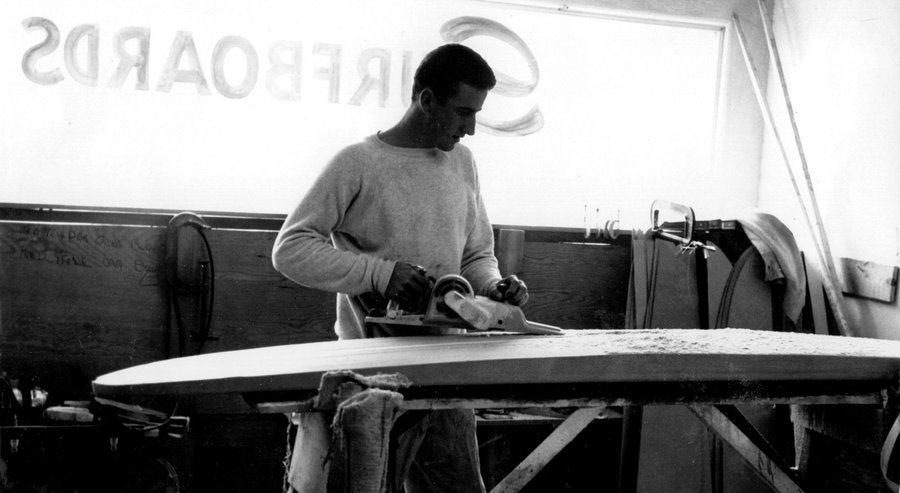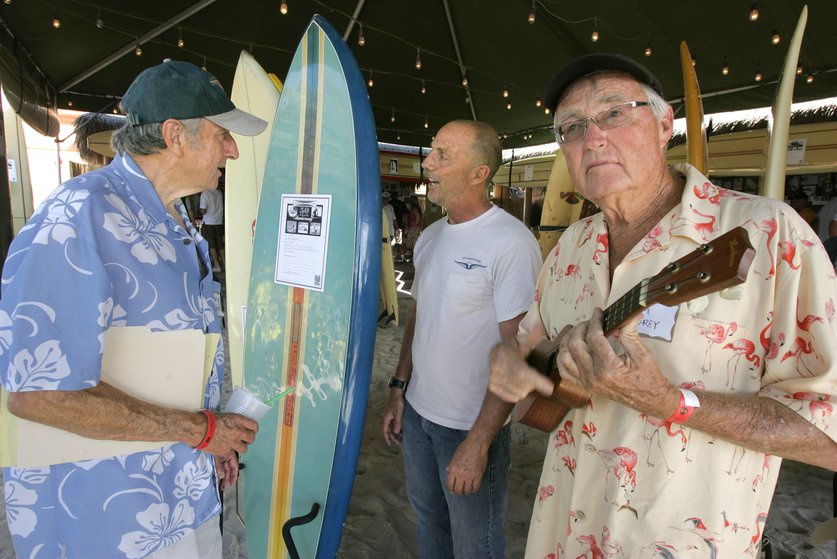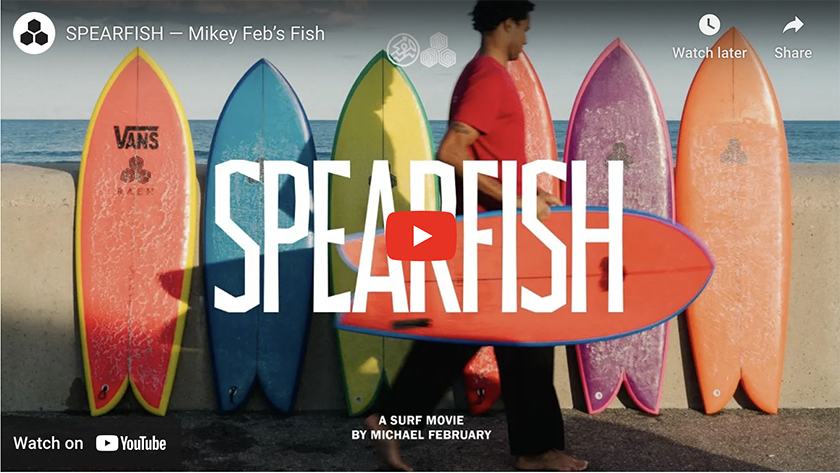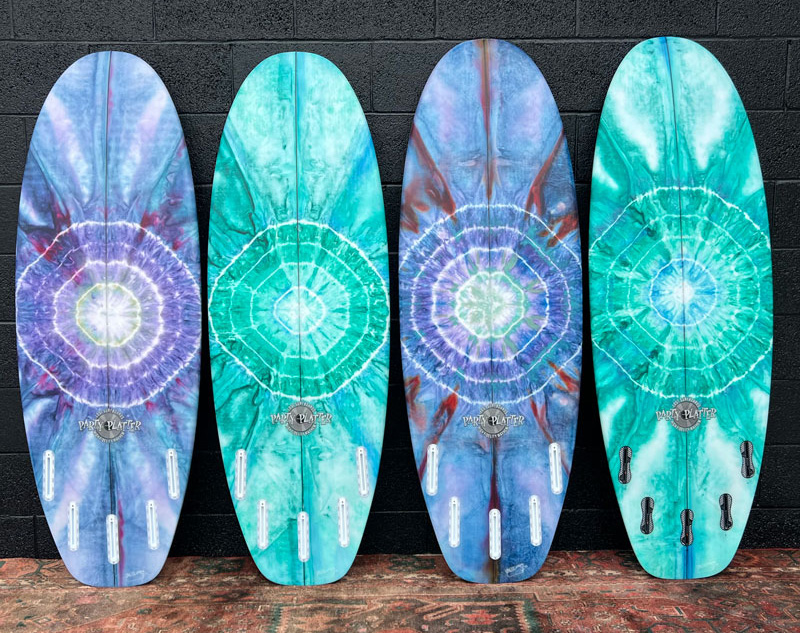Article re-posted from the San Diego Union-Tribune
http://www.sandiegouniontribune.com/news/2016/jan/01/larry-gordon-surfing-dies/

Before Larry Gordon helped launch an iconic surfboard brand out of a Pacific Beach garage, he was a surfer and he knew what surfers liked.
That’s how he became especially skilled in shaping custom surfboards, crafted in simple shapes informed by both the rider and the wave, family members said Saturday, a day after Gordon died in his San Diego home.
He was 76.
“He was about quality and performance,” said his daughter Debbie Gordon, who now manages Gordon & Smith Surfboards and Skateboards with her brother. “You get the best surfers out there on the board. They’ll give you feedback.
“He was an incredible surfer as well,” she said of her father, who in his latter years suffered from Parkinson’s disease.
“Before he’d ask you anything else, he’d say, ‘Did you surf today?’”
Larry Gordon was a chemistry student at San Diego State University in 1959 when he and fellow local surfer Floyd Smith started making surfboards out of Smith’s garage. He was one of the first people to bring polyurethane foam boards to San Diego. Picking up on a nascent trend in the industry, he started experimenting with foam materials at his father’s factory, Gordon Plastics.
The boards were lighter and easier to ride than their balsa wood counterparts — a trend that help bring surfing to a wider demographic in the 1960s and ‘70s.
The company, commonly referred to as G&S, started with surfboards but expanded later to include skateboards and clothing.
Smith took the business overseas in 1965 when he started G&S Australia. He sold his interest in the business in 1971. He still shapes wood boards in Northern California.
“G&S was the first real player in the surfboard industry to be based in San Diego,” said Matt Warshaw, a surf historian and author of the “Encyclopedia of Surfing.” He said the others, like Hobie, were based in Orange County and Los Angeles.
Warshaw also credited Gordon for being able to weather changes in the surfboard industry, particularly the “shortboard revolution” in the late 1960s which pushed the 10-foot longboards G&S was known for out of fashion.
“Other companies were really running scared,” he said, adding that many large companies folded during that time. “It was not cool to have an establishment board.
“Larry Gordon handled that transition well.”
Gayle Gordon said her husband was known to be humble, not flashy, and that he always felt he was lucky to “get paid for having so much fun.”
She said the business flourished at a time when the California lifestyle was popular in American culture and around the world. It was a lifestyle she came to know very well during their 54 years of marriage. The couple first met as neighbors in Pacific Beach, when she was 12 and he was 16. (Her sister was dating and later married Floyd Smith.)
Gayle Gordon, who worked in the company in various roles, said she surfed a bit in the past, but soon realized that the sport meant so much more to her husband. It became his sanctuary from the business and other realities of daily life.
“It was his getaway,” she said. “He never voiced it, but I just sensed it.”
She took up tennis.
Larry Gordon, who moved from Illinois at age 3, was a regular at Tourmaline Surfing Park, where he mingled with surfers young and old.
One local talented youth who caught his eye was 12-year-old Byron Rohrer, back in the early 1990s.
“Larry gave me my start,” said Rohrer, who surfed the professional circuit and now has his own company developing surf accessories for GoPro cameras. Gordon offered the Pacific Beach kid a chance at a G&S sponsorship, but only after Rohrer had worked off his first board by putting in some hours at the company’s former headquarters in Miramar.
“He was very kind-hearted, a real guiding light for a lot of young guys like myself and a younger generation of surfers,” said Rohrer, 36. “Over the decades so many great surfers from San Diego got their start by being part of the Gordon and Smith team.”
Surfers like Mike Hynson of “Endless Summer” fame and Skip Frye, a local surfing legend and surfboard shaper who worked for Gordon’s company.
“He sat down and taught me the basics of shaping a surfboard… ,” Frye said. “He was a spiritual mentor, too. He pushed me toward my faith, which is the most important part of my life right now.”
He said Gordon led a group of surfers who met every Saturday morning at Tourmaline to pray before they rode the waves.
He kept surfing as long as his body would allow him to do so, Debbie Gordon said. When he could no longer stand on a board, he rode on his knees.
“He really fought a good battle,” she said.
Gordon is survived by his wife, his three children — including son Eric and daughter Erin — five grandchildren and one great-grandchild.
Family members said Saturday that they had not yet finalized plans for a memorial service. Debbie Gordon said she expects that there will be a paddle out at Tourmaline in her father’s honor in the coming days.
On surfing blog Kelpfire, author Ken Lewis said G&S is the most iconic brand in surfing.
“Larry’s real legacy is not just as a savvy business owner,” he wrote in reaction to Gordon’s death, “but that of a surfer who followed his heart and was the father to his great family.”
In a 2014 interview with the U-T, Gordon said “It’s a great culture to be a part of and I am thankful that I was able to play a part in the development of the sport and the modern foam surfboard.”

Larry Gordon, left, chats with longtime San Diego surfer Eric “Bird” Huffman at a celebration for the 50th anniversary of Gordon & Smith. Playing his ukulele, at right, is Tom Morey, a surfing pioneer in his own right for creating the Boogie Board. Behind them are some some of the collectible G&S boards that were on display. — Charlie Neuman








